Manali has been the hotspot for most the travellers and trekkers across our country. It offers some amazing treks such as Hampta Pass, Beas Kund etc.
One of these treks is located just above the town of Manali which forms one of the biggest meadows of Manali. The surprising fact is that these meadows rise up to an altitude of 14000 ft. Located in the towering embrace of the Pir Panjal range in Himachal Pradesh lies a hidden jewel that has long captivated the imagination of trekkers, saints, and seekers alike—Bhrigu Lake.
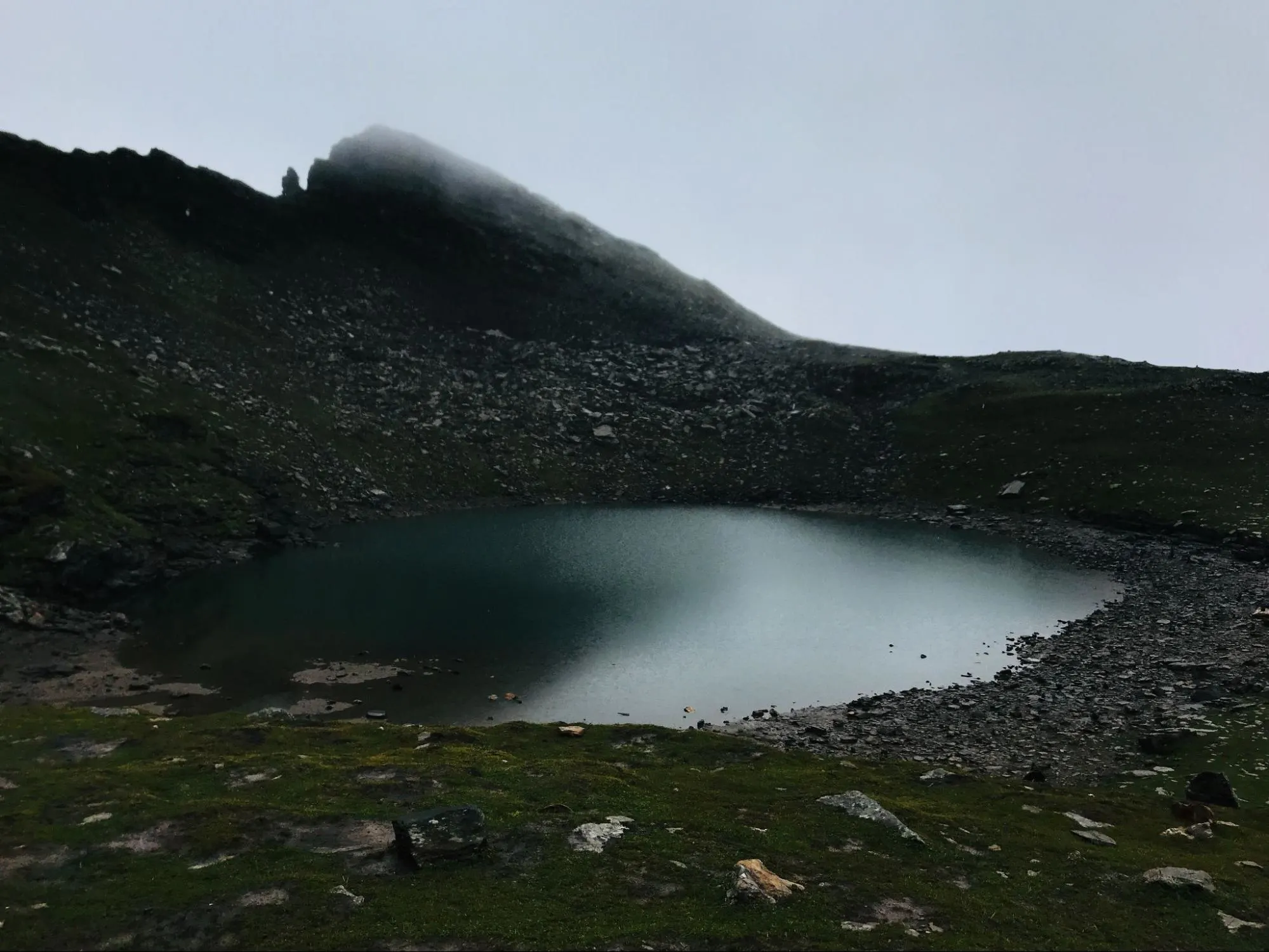
This high-altitude glacial lake, is one of the most accessible yet breathtaking alpine lake treks in the Indian Himalayas. Bhrigu Lake offers a unique blend of natural beauty, spiritual mystique, and adventure, making it a must-visit destination for anyone drawn to the serenity and grandeur of the mountains.
Bhrigu Lake derived its name from the legendary sage Maharishi Bhrigu, a revered figure in Indian mythology who is said to have meditated here. Local folklore says that the lake is blessed with his spiritual energy, which is perhaps why, despite its lofty elevation and sub-zero temperatures, the lake never completely freezes over. This phenomenon is considered sacred by locals. Even today, many pilgrims and spiritual seekers make the journey to the lake, believing in its divine aura and the blessings it bestows.
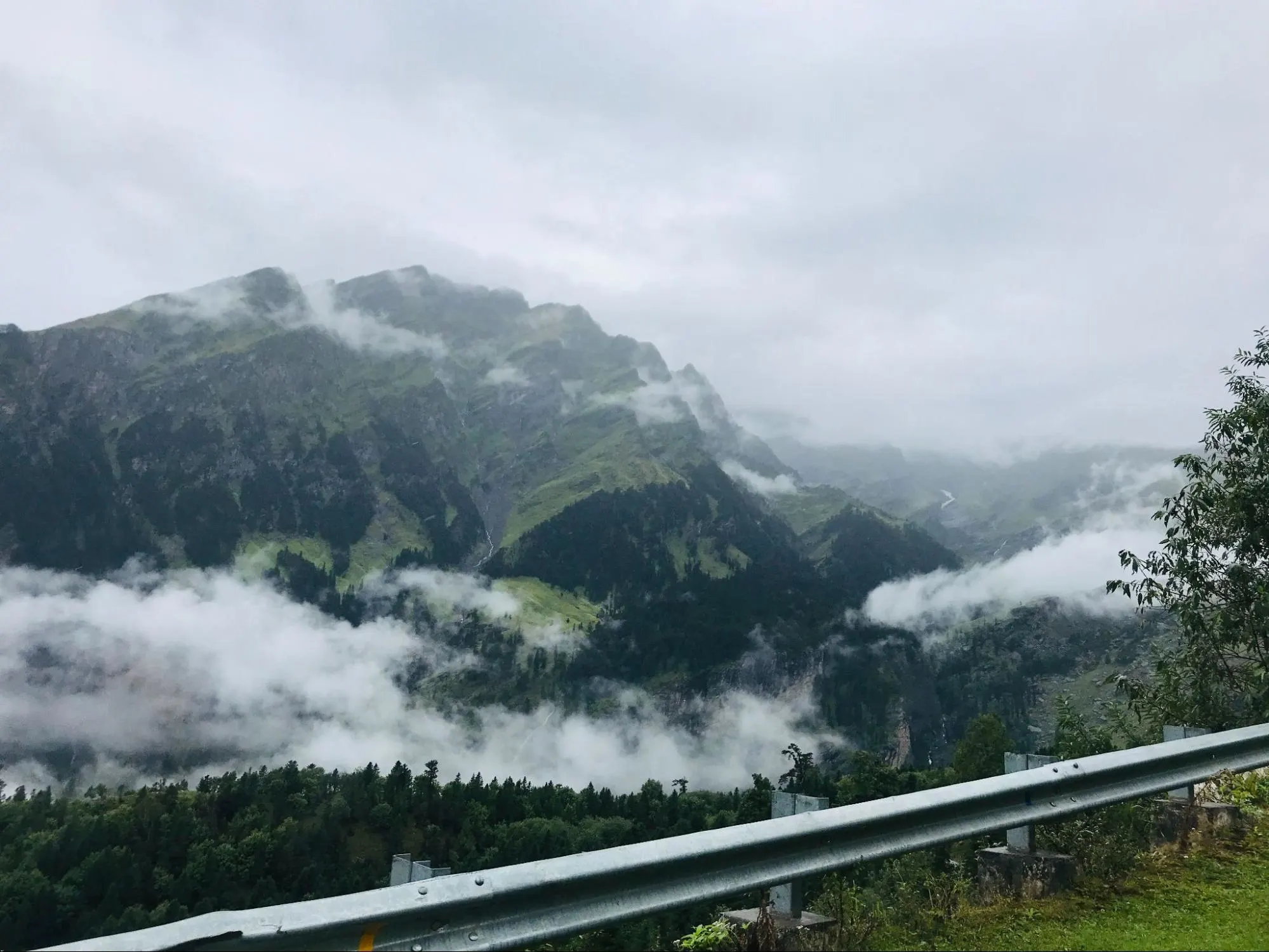
The trail starts from Gulaba, a small settlement located about 22 kilometers from Manali. The drive takes 30-40 minutes to reach Gulaba from Manali. We took a cab from the private bus stand to Gulaba on a September morning. The weather was not very much in our favour but we decided to continue our journey. This trek can also be completed as a circuit! You can ascend from the Gulaba side and descend from the Vashisht side or vice versa.
The trail from Vashisht side is much more steep but shorter. Since we had heavy rucksacks, we opted for the Gulaba side and we also decided to descend from the same side. The starting point of the trek is called “Chaudah Mod” or “14 Turns”. Every taxi driver in Manali knew about the same and we easily reached the point in any taxi. They charge 1200 for a Sumo from Manali private bus stand to the starting point and it was a 45 minute magnificent drive.
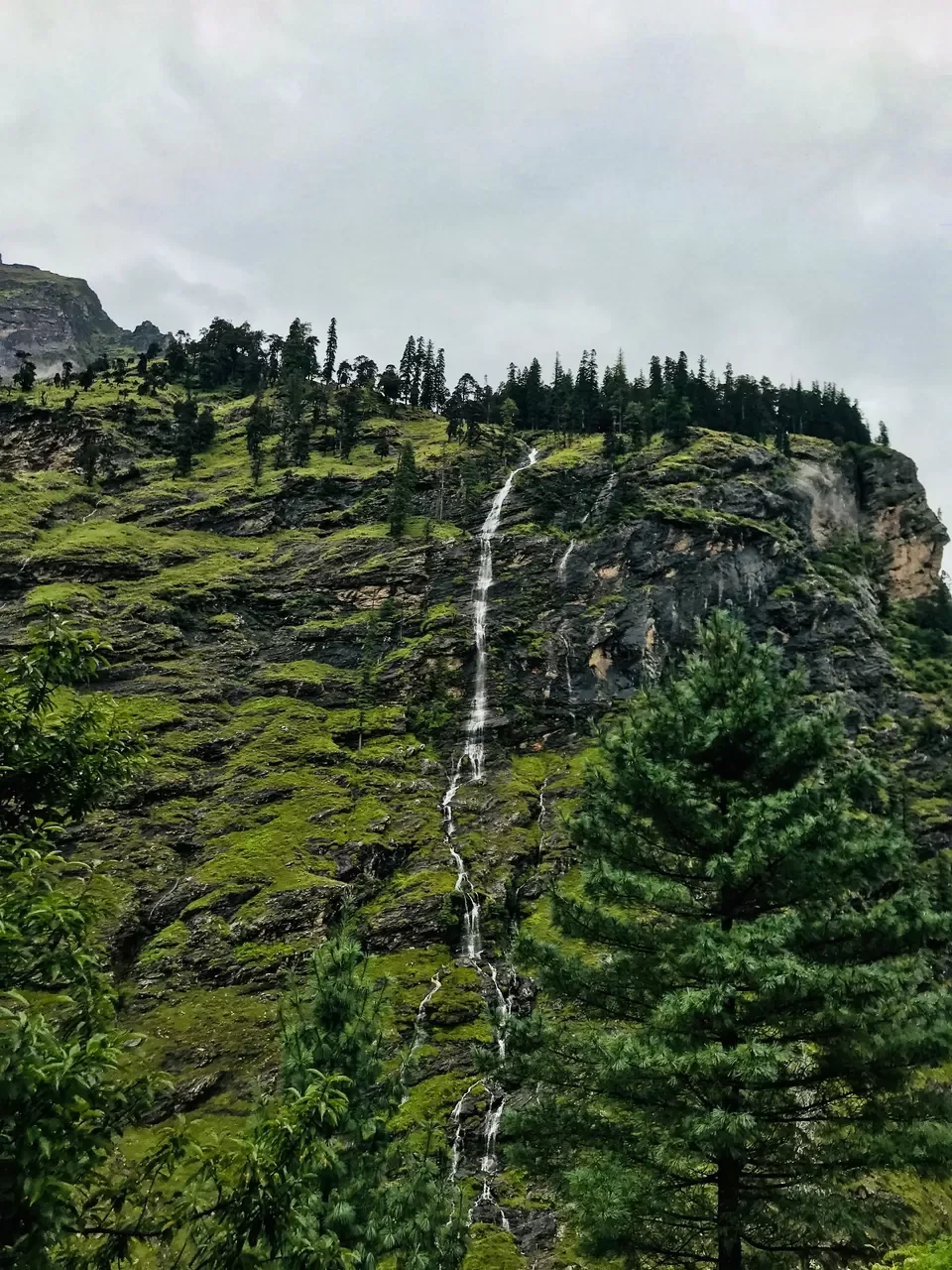
The trail was all marked and there were white arrows marking the direction every now and then. It was difficult to lose our way on this trail. We started our trek at 11:00 am. From the very first step, we were greeted with dense oak and cedar forests, and eventually, snow-clad paths that lead up to the lake. Unlike other high-altitude treks that require days of acclimatization and challenging ascents, Bhrigu Lake offers an ideal mix of moderate difficulty and breathtaking payoff.
The most common itinerary includes a first-day trek to Rola Kholi, a beautiful campsite surrounded by alpine flora and overlooking sweeping valley views. The next day usually marks the summit to Bhrigu Lake, where the terrain becomes steeper and the air thinner, culminating in the awe-inspiring sight of the lake itself. We climbed all the way to Rola Kholi (6.5 km from the starting point). It is a moderate climb all the way and a flat trail in the last 30 minutes.
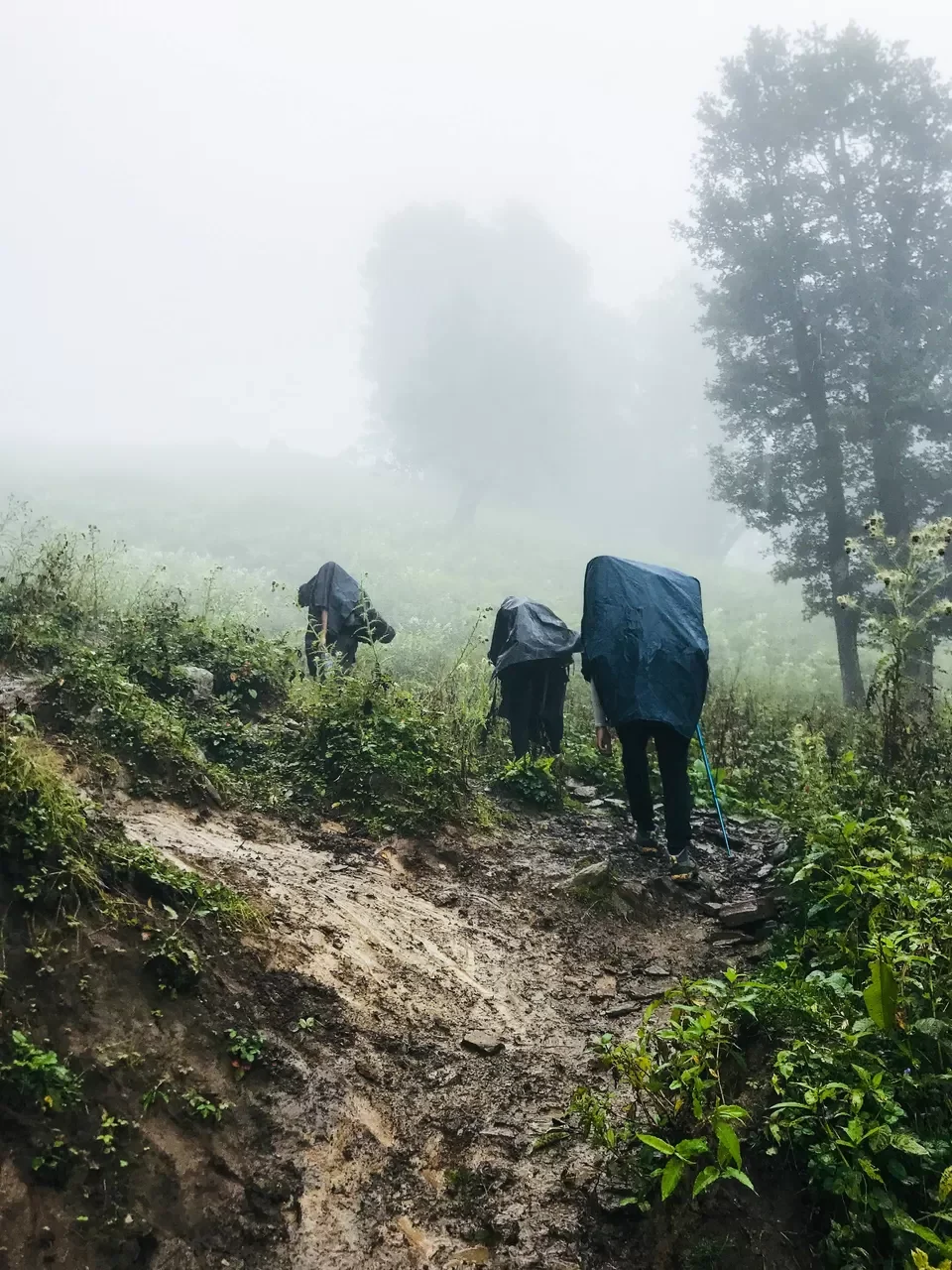
It was raining non stop from the starting till Rola Kholi and we were already drenched! We reached Rola Kholi by 5:30 pm and pitched our tents to dry up. It rained all night but we had a good sleep. The lower meadows were rich with blooming wildflowers in shades of violet, yellow, and crimson. These alpine pastures, also known as “Bugyals,” were grazing grounds for local shepherds and their flocks. The forests were home to a variety of bird species, and if you’re lucky, you might spot Himalayan monals, snowcocks, or even the musk deer. The air was pure and invigorating, a welcoming change for those coming from urban landscapes.

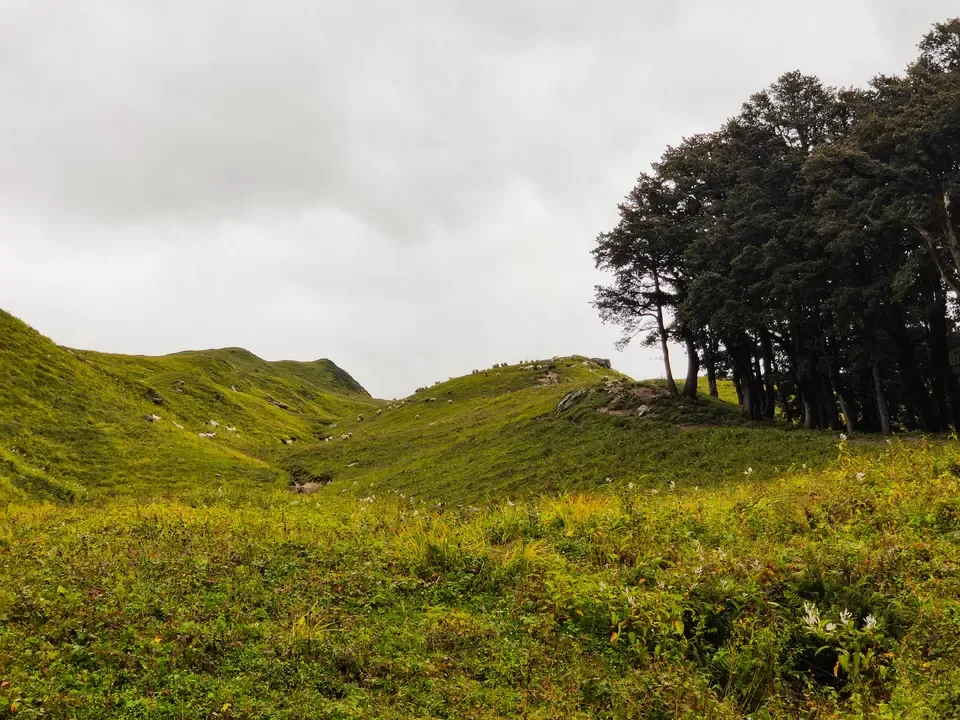
The next day usually marks the summit to Bhrigu Lake, where the terrain becomes steeper and the air thinner, culminating in the beautiful sight of the lake itself. After climbing straight for an hour, we reached an area full of cairns. That marked the hilltop and it was followed by a descent for the next 10 minutes. It was a plain walk for the next 15 minutes and after encountering boulders, it was time to ascend.
That was the last ascent and it went on for at least an hour. We just followed the white arrows marked on the boulders and it took us to the lake! Upon reaching Bhrigu Lake, we were left speechless by its surreal beauty. The lake, flanked by snowy peaks and set amidst an amphitheater of mountains, reflected the sky with an uncanny clarity. Depending on the season, the lake changed colors — shimmering blue under a summer sun, a crystal-clear teal during monsoon, and a silvery white when partially frozen in early spring or late autumn.
Adding to the allure was the tranquil atmosphere. The only sounds that accompanied you there were the whispers of the wind and the occasional call of a Himalayan bird. There were no cafes, no crowds, and no noise – just pure, unadulterated nature.
Bhrigu Lake is not just a geographical marvel but also a spiritual epicenter. Locals in nearby villages such as Vashisht and Gulaba believe that the lake is blessed and guarded by the deity of the region. Rituals and prayers are often performed before and after the trek, especially by those undertaking it as a pilgrimage. Interestingly, the nearby village of Vashisht is also renowned for its hot springs and ancient temples, and many trekkers choose to soak in these rejuvenating waters either before starting or after completing the trek.
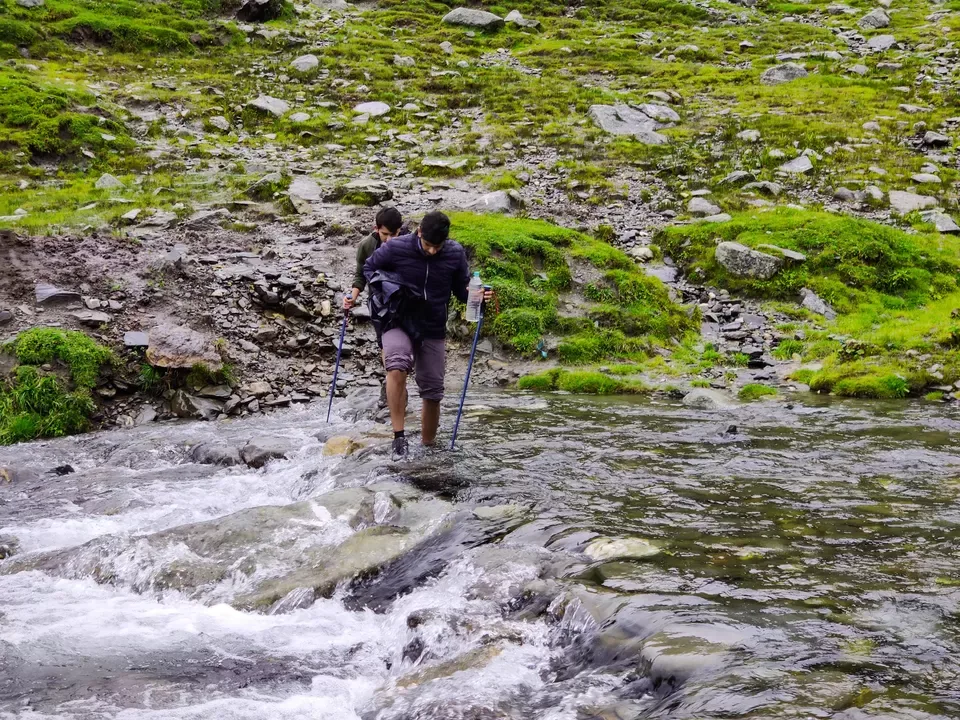
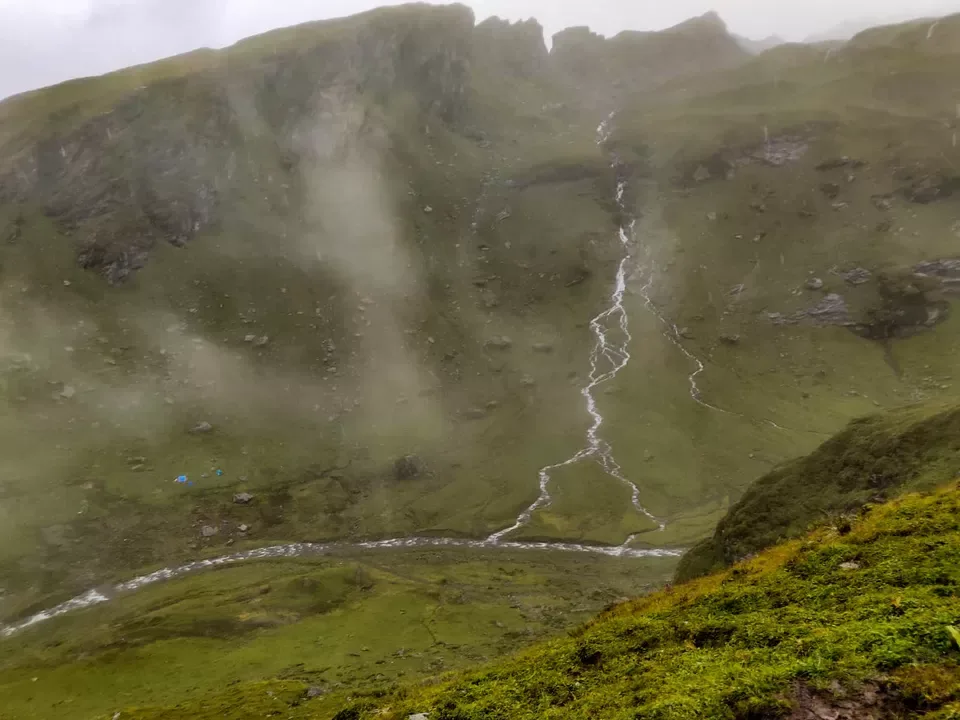
We spent 30-45 minutes in peace around the lake and it had started to whiteout. The visibility was reduced to 10 meters and we could not trace out the trail because the arrows stopped at a point and we had to find our own path. We went in the wrong direction and climbed up further to 14300 feet and realized it soon! Somehow we managed to find the trail and started to descend asap as the whiteout takes a lot of toll on time.
We reached Rola Kholi at 2:00 pm and packed up our stuff and descended back to the starting point of the trek! We descended back to the road by 6:30 pm just before dark.
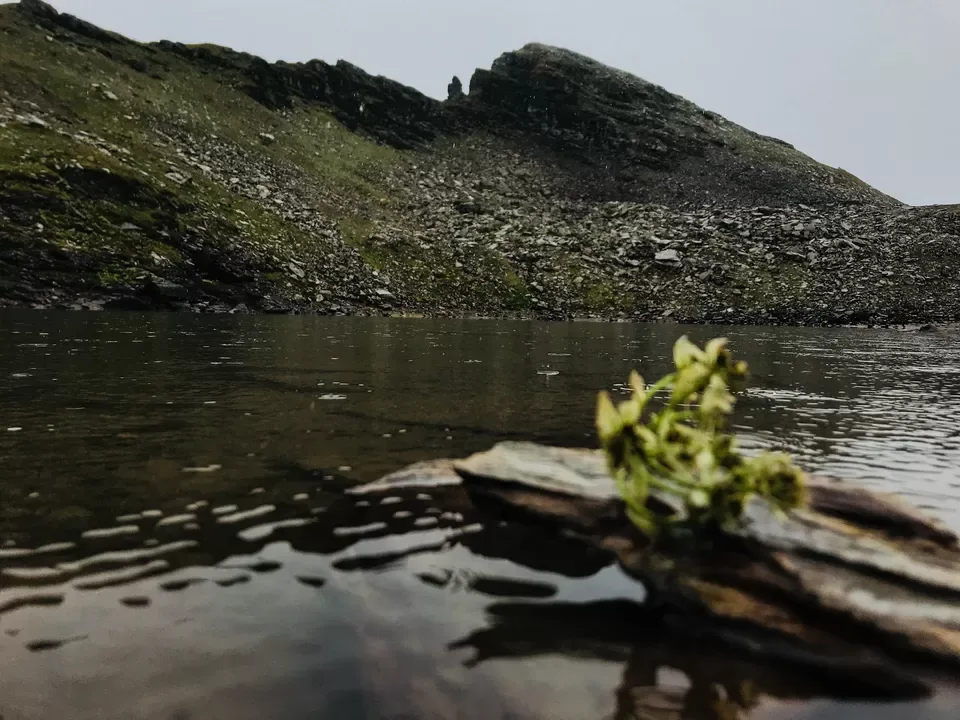
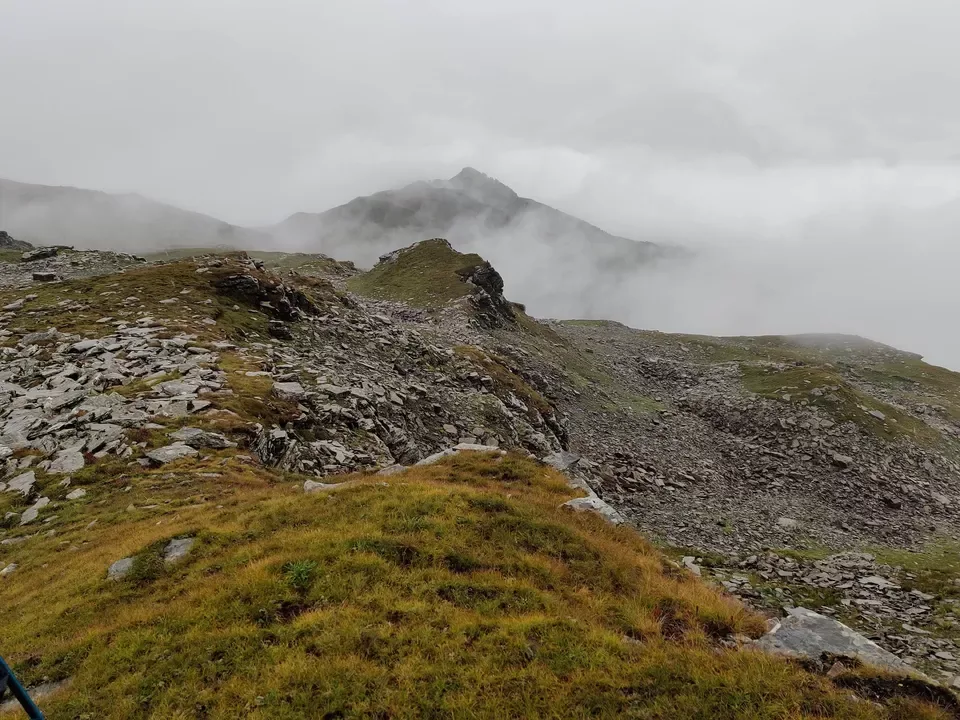
I would recommend a guide on this trek if you are not experienced enough. Whiteouts can be dangerous but we completed this trek in 2 days and in non stop drenching conditions. There are intermediate mobile signals all along the trek!
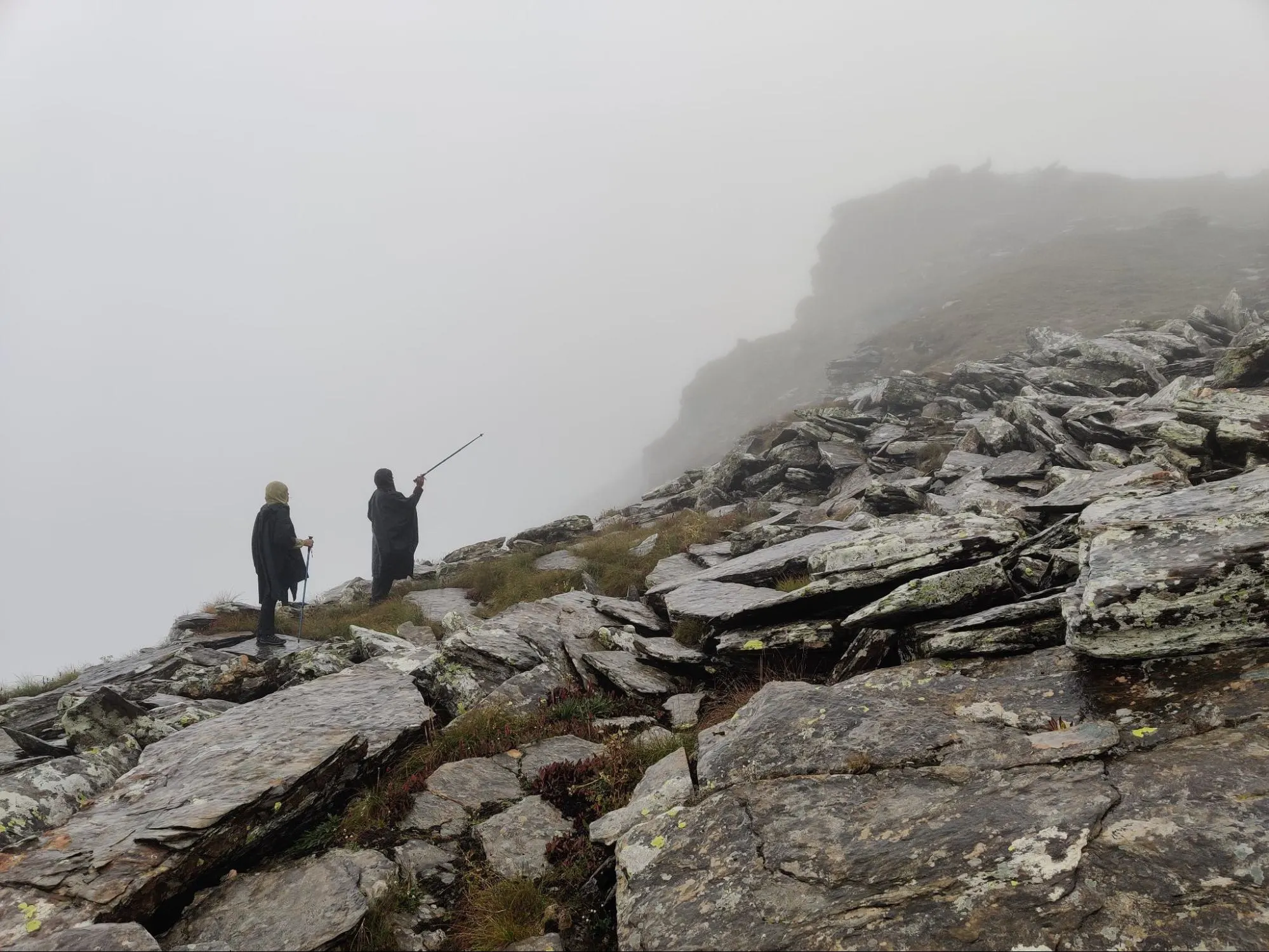
In a world where digital noise and daily distractions dominate, Bhrigu Lake stands as a reminder of what pure, untouched nature feels like. It is a place where myths breathe through mountain winds, where every step feels like a dialogue with the divine, and where silence has a sound of its own.
Whether you are a spiritual seeker, a photography enthusiast, an adventure lover, or someone simply looking for peace, Bhrigu Lake offers a transformative experience. It is not just a destination but a journey into the heart of the Himalayas and, perhaps, into the depths of your own soul.

Leave a Comment